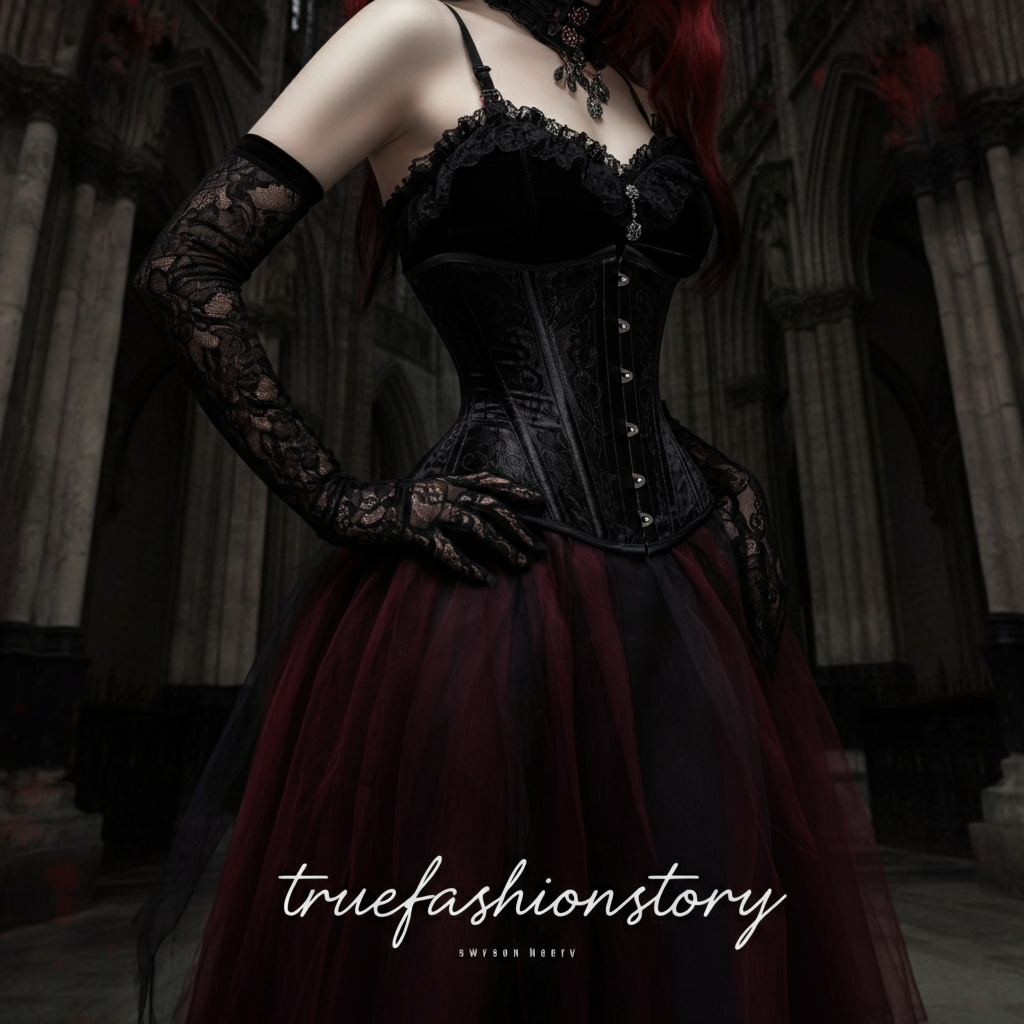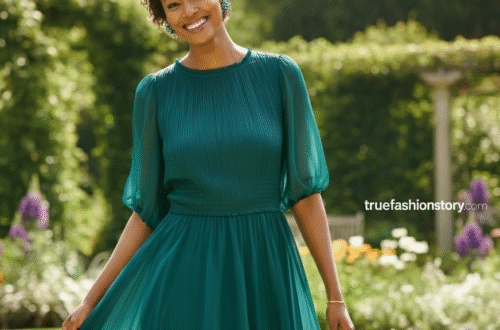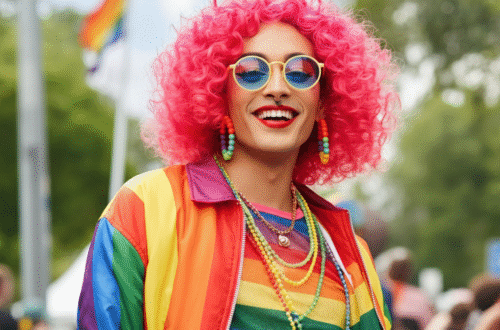You’ve probably seen it everywhere lately – that mysterious, darkly alluring style that makes people stop and stare. Devil fashion isn’t just about wearing black anymore. It’s become a powerful form of self-expression that blends gothic elements with modern trends, creating looks that are both edgy and sophisticated.
This comprehensive guide will walk you through everything you need to know about devil fashion, from its fascinating history to how you can incorporate these striking elements into your own wardrobe. Whether you’re curious about the style or ready to embrace your dark side, we’ve got you covered.
What Is Devil Fashion?
Devil fashion represents a bold aesthetic movement that draws inspiration from gothic culture, dark romanticism, and alternative subcultures. This style isn’t about promoting anything sinister – instead, it’s about embracing dramatic beauty, mystery, and self-expression through carefully curated dark elements.
The term encompasses various substyles including gothic fashion, dark romantic looks, and modern alternative wear. Think flowing black fabrics, intricate lace details, statement jewelry with mystical symbols, and makeup that emphasizes dramatic contrasts. It’s fashion that tells a story and makes a statement.
Key characteristics of devil fashion include:
- Predominantly dark color palettes (black, deep reds, purples)
- Rich textures like velvet, lace, leather, and silk
- Statement accessories featuring mystical or gothic symbols
- Dramatic silhouettes and layering techniques
- Bold makeup emphasizing eyes and lips
The History Behind Devil Fashion
Gothic Roots and Cultural Origins
Devil fashion traces its roots back to the gothic subculture that emerged in the late 1970s and early 1980s. Initially connected to post-punk music, the gothic aesthetic was heavily influenced by Victorian mourning dress, romantic literature, and medieval imagery.
The style gained momentum through iconic figures like Siouxsie Sioux and bands like Bauhaus, who combined dramatic visual presentations with their musical performances. This created a template for self-expression that valued darkness as beauty rather than something to fear.
Evolution Through the Decades
1980s Foundation:
- Heavy emphasis on DIY aesthetics
- Inspiration from Victorian and Edwardian fashion
- Focus on dramatic makeup and pale skin
1990s Expansion:
- Industrial influences added harder edges
- Cyberpunk elements introduced metallic accents
- Greater acceptance in mainstream fashion
2000s Modernization:
- Integration with metal and alternative music scenes
- Improved quality and accessibility of gothic clothing
- Online communities fostering global connections
2010s-Present:
- Social media democratization of alternative fashion
- Fusion with contemporary trends
- Increased representation in mainstream media
According to fashion industry reports from truefashionstory.com, alternative fashion markets have grown by 15% annually since 2020, with devil fashion representing a significant portion of this growth.
Core Elements of Devil Fashion
Color Psychology in Dark Fashion
The devil fashion aesthetic relies heavily on a carefully chosen color palette that creates visual impact and emotional resonance. Understanding color psychology helps explain why these choices are so effective:
Black: The foundation of devil fashion, black represents sophistication, mystery, and power. It’s slimming, versatile, and creates dramatic contrast with other elements.
Deep Reds: Symbolizing passion, strength, and intensity, burgundy and crimson add warmth to otherwise cool-toned outfits.
Royal Purple: Associated with luxury, creativity, and mysticism, purple adds depth and richness to devil fashion looks.
Silver and Gray: These neutral tones provide balance and can soften the intensity of darker colors while maintaining the overall aesthetic.
Essential Fabrics and Textures
The tactile experience of devil fashion is just as important as its visual impact. Different fabrics convey different moods and levels of formality:
- Velvet: Creates luxury and depth, perfect for formal devil fashion pieces
- Lace: Adds feminine romance and vintage appeal
- Leather and Faux Leather: Provides edge and durability for everyday wear
- Silk and Satin: Offers elegant drape and subtle shine
- Cotton and Linen: Ensures comfort in casual devil fashion looks
Types of Devil Fashion Styles
Romantic Gothic
This substyle emphasizes the softer, more feminine aspects of devil fashion. Think flowing skirts, corset tops, delicate lace details, and vintage-inspired jewelry. Colors tend to be slightly softer – deep purples, burgundies, and occasionally dark greens mixed with the traditional black base.
Key pieces include:
- Corset tops with lace-up detailing
- Long, flowing skirts with multiple layers
- Victorian-inspired blouses with puffy sleeves
- Delicate choker necklaces
- Pointed-toe boots or Mary Jane shoes
Industrial Gothic
Taking inspiration from cyberpunk and industrial music scenes, this style incorporates harder edges, metallic elements, and more structured silhouettes. It’s perfect for those who want their devil fashion to feel more modern and urban.
Essential elements:
- Structured jackets with military influences
- Pants with straps, buckles, or unusual closures
- Platform boots with metal details
- Statement jewelry featuring gears, spikes, or chains
- Makeup with metallic accents
Casual Dark Aesthetic
For everyday wear, devil fashion can be toned down while maintaining its essential character. This approach focuses on incorporating dark elements into otherwise conventional outfits.
Approach includes:
- Dark jeans paired with band t-shirts
- Black cardigans over regular clothing
- Subtle gothic jewelry
- Dark lipstick as the main statement piece
- Combat boots or alternative footwear
Building Your Devil Fashion Wardrobe
Essential Wardrobe Pieces
|
Category |
Must-Have Items |
Investment Level |
Versatility Score |
|---|---|---|---|
|
Tops |
Black corset, lace blouse, band tees |
Medium-High |
High |
|
Bottoms |
Black skinny jeans, flowing skirt, leather pants |
Medium |
High |
|
Outerwear |
Long coat, leather jacket, cape |
High |
Medium-High |
|
Footwear |
Combat boots, pointed heels, platform shoes |
Medium-High |
High |
|
Accessories |
Chokers, statement rings, gothic bags |
Low-Medium |
Medium |
Shopping Strategies
Budget-Friendly Options:
- Thrift stores often have vintage pieces perfect for devil fashion
- DIY modifications can transform regular clothing
- Online marketplaces offer affordable alternatives
- End-of-season sales at alternative clothing stores
Investment Pieces Worth Splurging On:
- High-quality leather jacket or coat
- Well-made corsets that provide proper support
- Durable boots that will last for years
- Statement jewelry from reputable alternative brands
Mixing Devil Fashion with Everyday Wear
The key to successfully incorporating devil fashion into your regular wardrobe is starting small and building confidence. You don’t need to completely overhaul your style overnight.
Beginner-friendly approaches:
- Add one devil fashion element to existing outfits
- Focus on accessories before changing core wardrobe pieces
- Experiment with makeup and nail polish first
- Choose versatile pieces that work in multiple settings
Styling Tips for Devil Fashion Success
Proportions and Silhouettes
Devil fashion often plays with dramatic proportions to create visual interest. Understanding how different silhouettes work helps you create balanced, flattering looks:
Creating Visual Balance:
- If wearing a voluminous top, pair with fitted bottoms
- Long, flowing pieces benefit from defined waistlines
- Heavy accessories work best with simpler clothing
- Layering should build gradually from base pieces
Makeup and Beauty Considerations
Makeup is a crucial component of devil fashion that can make or break your overall look. The goal is to enhance your natural features while creating drama and mystery.
Essential makeup techniques:
- Eyes: Focus on definition with dark eyeshadows and bold eyeliner
- Lips: Choose between dramatic dark colors or classic red
- Complexion: Aim for smooth, even coverage rather than overly pale looks
- Contouring: Use subtle techniques to enhance bone structure
Hair Styling Options
Your hairstyle should complement your devil fashion choices without overwhelming them. Consider these popular options:
- Classic styles: Sleek straight hair, vintage-inspired waves
- Alternative cuts: Asymmetrical styles, undercuts with longer sections
- Color choices: Natural dark colors, temporary color options for special occasions
- Accessories: Hair clips with gothic elements, headbands, hair scarves
Devil Fashion for Different Occasions
Professional Settings
Incorporating devil fashion into work environments requires careful balance and understanding of dress codes. Focus on subtle elements that add personality without compromising professionalism.
Office-appropriate elements:
- Dark blazers with interesting textures
- Modest gothic jewelry (small rings, simple necklaces)
- Professional makeup with slightly dramatic eyes
- Classic pointed-toe shoes in black
- Structured handbags in dark colors
Social Events and Parties
This is where devil fashion really shines. Special occasions allow for more dramatic interpretations of the style, giving you freedom to experiment with bolder choices.
Party-ready looks:
- Statement corsets as outerwear
- Dramatic eye makeup with glitter or metallic accents
- Bold jewelry combinations
- Unique textures and fabrics
- Platform shoes or striking heels
Casual Daily Wear
For everyday activities, devil fashion should feel comfortable and practical while maintaining its distinctive aesthetic. Focus on pieces that move well and suit your lifestyle.
Daily wear essentials:
- Comfortable black jeans or leggings
- Soft cotton tops with interesting details
- Lightweight cardigans or hoodies
- Comfortable boots suitable for walking
- Practical bags that fit your daily needs
Popular Devil Fashion Brands and Designers
Established Alternative Fashion Houses
Several brands have built reputations specifically within the devil fashion community, offering high-quality pieces designed for this aesthetic:
Premium Brands:
- Killstar: Known for occult-inspired designs and quality materials
- Punk Rave: Specializes in gothic and steampunk influences
- Hell Bunny: Offers vintage-inspired pieces with gothic elements
- Blackcraft Cult: Focuses on streetwear with dark aesthetic elements
Emerging Designers:
Many independent designers are creating innovative devil fashion pieces, often available through online platforms or at alternative fashion events. These designers frequently offer more unique pieces and custom sizing options.
DIY and Customization Culture
A significant aspect of devil fashion culture involves personalizing and modifying clothing to create unique looks. This DIY approach keeps costs down while ensuring your style remains individual.
Popular DIY techniques:
- Adding studs, chains, or patches to existing clothing
- Distressing techniques for aged appearances
- Fabric painting or dyeing for custom colors
- Sewing modifications to change silhouettes
- Creating custom accessories from found materials
The Cultural Impact of Devil Fashion
Challenging Fashion Norms
Devil fashion has played an important role in expanding mainstream fashion’s definition of beauty and acceptable self-expression. By celebrating darker aesthetics, it has encouraged greater acceptance of alternative styles in general society.
The movement has influenced major fashion houses to incorporate gothic elements into their collections, bringing alternative fashion concepts to wider audiences. This mainstream acceptance has helped reduce stigma while maintaining the style’s rebellious spirit.
Community and Identity
For many people, devil fashion represents more than just clothing choices – it’s about finding community and expressing identity. Online forums, social media groups, and real-world events provide spaces where people can share styling tips, discuss fashion history, and support each other’s self-expression journey.
According to recent surveys featured on truefashionstory.com, 78% of alternative fashion enthusiasts report feeling more confident and authentic when wearing their preferred style, highlighting the psychological benefits of fashion alignment with personal identity.
Media Representation and Evolution
Television shows, movies, and social media have significantly influenced how devil fashion is perceived and adopted. Positive representation in popular media has helped normalize alternative fashion choices while inspiring new interpretations of classic gothic elements.
Common Misconceptions About Devil Fashion
Addressing Stereotypes
Unfortunately, devil fashion still faces misconceptions that can create barriers for people interested in exploring the style. Understanding and addressing these stereotypes helps create more inclusive fashion communities.
Common myths and realities:
- Myth: Devil fashion is only for certain personality types
- Reality: People with diverse interests and backgrounds enjoy this aesthetic
- Myth: It’s expensive and impractical for everyday wear
- Reality: Budget-friendly options exist, and many pieces are quite versatile
- Myth: Devil fashion is inappropriate for professional settings
- Reality: Subtle incorporations can work in most environments
Religious and Cultural Sensitivity
It’s important to approach devil fashion with cultural awareness and respect. The style should celebrate personal expression and aesthetic beauty rather than mock or appropriate religious or cultural symbols.
Guidelines for respectful practice:
- Research the history and meaning behind symbols before using them
- Focus on aesthetic appreciation rather than religious mockery
- Respect workplace and social boundaries
- Remember that fashion is about personal expression, not making statements about others’ beliefs
Future Trends in Devil Fashion
Sustainable and Ethical Considerations
As fashion consciousness grows, devil fashion is adapting to include more sustainable practices. This includes supporting ethical manufacturers, choosing quality pieces that last longer, and embracing secondhand and vintage shopping.
Emerging sustainable practices:
- Upcycling and modifying existing clothing instead of buying new
- Supporting small, ethical alternative fashion brands
- Choosing quality over quantity in wardrobe building
- Participating in clothing swaps and secondhand markets
Technology Integration
Modern devil fashion is beginning to incorporate technological elements, creating new possibilities for self-expression:
- LED accents in jewelry and clothing
- Color-changing fabrics activated by temperature or UV light
- 3D-printed accessories with intricate gothic designs
- Smart textiles that respond to environmental conditions
Global Influences and Fusion Styles
As devil fashion continues to evolve, it’s incorporating influences from global alternative fashion movements, creating exciting fusion styles that blend traditional gothic elements with international aesthetics.
Key Takeaways
- Devil fashion is about self-expression: It’s a powerful way to communicate personality and creativity through clothing choices
- Start small and build gradually: You don’t need to completely transform your wardrobe overnight
- Quality matters more than quantity: Invest in well-made pieces that will last and versatile enough for multiple looks
- Community support enhances the experience: Connecting with others who share your fashion interests provides inspiration and practical advice
- Respect and awareness are essential: Approach the style with cultural sensitivity and understanding of its historical context
- Sustainability is increasingly important: Consider the environmental and ethical impact of your fashion choices
- Professional integration is possible: Subtle devil fashion elements can work in most environments with thoughtful styling
Frequently Asked Questions
Is devil fashion appropriate for teenagers?
Yes, devil fashion can be appropriate for teenagers when chosen thoughtfully. Focus on age-appropriate pieces like band t-shirts, dark jeans, simple gothic jewelry, and subtle makeup. Parents and teens should discuss boundaries and school dress codes to ensure choices are suitable for all environments.
How much should I budget for starting a devil fashion wardrobe?
You can start incorporating devil fashion elements for as little as $50-100 by focusing on accessories and makeup. A complete wardrobe transformation might cost $300-1000 depending on your preferences and shopping strategies. Remember that thrift stores and sales can significantly reduce costs.
Can devil fashion work in conservative professional environments?
Yes, but it requires subtle integration. Focus on dark colors, interesting textures, minimal gothic jewelry, and professional silhouettes. A black blazer with subtle interesting details, dark lipstick, and small gothic accessories can add personality while maintaining professionalism.
What’s the difference between gothic fashion and devil fashion?
While closely related, devil fashion is broader and more inclusive than traditional gothic fashion. It incorporates elements from various alternative subcultures and tends to be more adaptable to mainstream settings. Gothic fashion is more historically specific and traditionally structured.
How do I handle negative reactions to my devil fashion choices?
Remember that your fashion choices are about personal expression, not pleasing everyone. Focus on the positive support from friends and community members who appreciate your style. If you encounter negativity, stay confident in your choices and remember that fashion diversity makes the world more interesting.
Are there any colors besides black that work in devil fashion?
Absolutely! While black is the foundation, deep reds, rich purples, dark greens, navy blue, and metallic silver all work beautifully in devil fashion. The key is choosing deep, rich tones rather than bright or pastel colors.
Ready to explore your dark side? Visit truefashionstory.com for more alternative fashion inspiration and styling guides.





